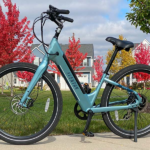Food trucks have become incredibly popular, offering mobile dining experiences with a wide variety of food options. From gourmet burgers to fusion tacos, these trucks cater to diverse tastes while being more flexible and affordable than traditional restaurants. If you’ve ever dreamed of turning your love for cooking into a business, starting a food truck could be the perfect opportunity for you.
Step-by-Step Guide to Start a Food Truck
Step 1: Conduct Market Research

Before diving in, you need to understand the market you’re entering. Researching will give you a solid foundation for your business.
Identify Your Target Audience and Cuisine Niche

Consider the demographics of your local area. Are people interested in fast casual, gourmet, or healthy food options? Find a niche that aligns with your passion and meets a demand in your community.
Analyze Competitors and Current Food Trends
Scout the competition and evaluate what’s working for them and what isn’t. Are there gaps you can fill? Additionally, study food trends. Is there a growing interest in plant-based diets or comfort foods?
Understand Local Demand and Preferences
Every city or town has its unique tastes. Make sure your menu appeals to local preferences while also offering something unique that differentiates your food truck from others.
Step 2: Develop a Business Plan

A well-crafted business plan is essential for mapping out your food truck’s future and securing funding.
Importance of a Solid Business Plan
Your business plan will outline your goals, strategies, and financial projections. This will help you stay focused and organized, and it’s a must if you’re seeking investors or loans.
Financial Forecasting and Budget
Your plan should detail all costs, including the truck, equipment, permits, ingredients, and marketing. Be realistic in your financial projections to avoid overspending.
Business Goals and Growth Strategy
Set clear, measurable goals. Where do you want your food truck to be in a year? In five years? This could include expanding to a second truck or exploring catering opportunities.
Step 3: Understand the Legal Requirements

Food truck businesses are subject to various regulations, and the rules can vary by state and city.
Permits, Licenses, and Regulations
You’ll need several permits, such as a business license, health department permit, and possibly a parking permit. Research local regulations to ensure compliance.
Health and Safety Standards
Food trucks are held to the same health standards as restaurants. You’ll need to pass regular inspections to ensure your truck and equipment are up to code.
Zoning Laws and Parking Restrictions
Some cities have restrictions on where food trucks can operate. Look into local zoning laws and find out which locations are food truck-friendly.
Step 4: Secure Funding for Your Food Truck

Starting a food truck requires upfront capital, so it’s important to secure adequate funding.
Cost Breakdown
Expect to spend on the truck itself (new or used), kitchen equipment, permits, and marketing. The total cost can range from $50,000 to $200,000 depending on your specific needs.
Options for Financing
You can explore various financing options, such as small business loans, crowdfunding, or seeking out investors. Personal savings can also be used to cover initial costs.
Step 5: Design and Outfit Your Food Truck

Your food truck’s design will directly impact its functionality and appeal.
Choosing the Right Truck Size and Design
Your truck should have enough space to store equipment and prepare food comfortably. Consider the flow of operations to ensure efficiency.
Essential Kitchen Equipment and Layout
Equip your truck with the necessary tools: grills, fryers, refrigerators, and sinks. Every square inch counts, so make sure your layout is practical.
Branding Your Truck
Your truck’s branding, including its name, logo, and color scheme, should be eye-catching and reflect your cuisine. This will make your truck more memorable to customers.
Step 6: Develop Your Menu

Your menu is your brand’s identity. It should be distinctive and manageable in a small kitchen space.
Crafting a Menu That Stands Out
Focus on a small selection of standout items rather than a large, complex menu. Offering unique or signature dishes can set you apart from competitors.
Pricing Strategies for Profitability
Price your items to cover all costs while remaining competitive. Factor in food costs, labor, and operating expenses when setting prices.
Menu Flexibility
Design your menu to be flexible so you can rotate dishes or introduce seasonal specials to keep customers coming back.
Step 7: Build a Strong Marketing Strategy

A strong marketing plan will help you reach your audience and build a loyal customer base.
Social Media and Online Presence
In today’s digital world, having an active presence on social media platforms like Instagram, Facebook, and Twitter is crucial. Post photos, promotions, and your truck’s daily location.
Creating a Website
A dedicated website is key for your food truck. It lets customers view your menu, check your schedule, and contact you. Make sure it’s mobile-friendly and consider adding online ordering or event booking. Customer reviews and regular updates will help build trust and attract more business.
Benefit of Food Truck
- Low Startup Costs: Generally less expensive than opening a traditional restaurant.
- Flexibility: Ability to move locations based on demand and events.
- Unique Branding Opportunities: Stand out with a distinctive truck design and engage directly with customers.
FAQs
1. What is a food truck business?
A food truck business involves preparing, cooking, and selling food from a large vehicle equipped with a kitchen. It allows owners to move to different locations, catering to diverse customers at events, festivals, or busy areas.
2. How much does it cost to start a food truck business?
The startup cost can vary but typically ranges from $50,000 to $150,000. Costs include purchasing a truck, kitchen equipment, permits, insurance, initial food stock, and branding.
3. Do I need a special license to operate a food truck?
Yes, you will need various permits and licenses depending on your location, such as a business license, food handler’s permit, and health department permits. Each city and state may have specific requirements.
4. What are the main operating costs of a food truck?
Operating costs include food supplies, gas, maintenance, truck insurance, parking, marketing, employee wages, and equipment upkeep. These vary depending on the size of the business and location.
5. How do I choose a location for my food truck?
Selecting a location involves finding areas with high foot traffic, such as business districts, parks, or event spaces. Many food truck owners rotate between multiple locations based on demand and local events.
Final Thought
Starting a food truck offers a cost-effective entry into the food industry, allowing for flexibility in location and unique branding opportunities. This mobile approach reduces financial risk and minimizes overhead costs compared to traditional restaurants. With the ability to adapt to customer demand and events, a food truck provides a dynamic way to build a culinary brand and achieve high visibility.
















